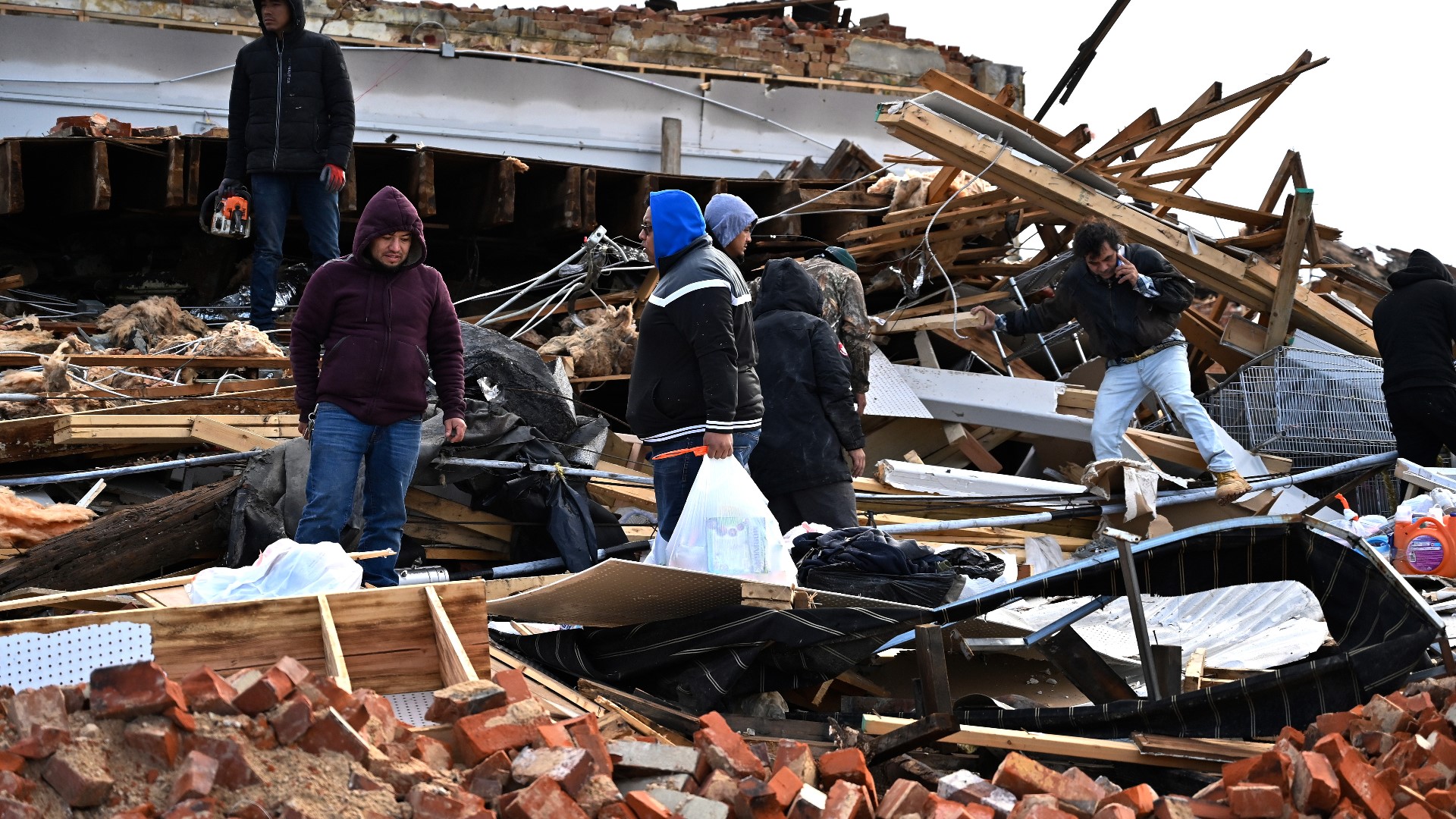LOUISVILLE, Ky. — The peak season for severe weather in Kentuckiana is April and May. Kentucky and Indiana weather has proven it's important to be prepared for severe weather to strike anywhere, at any time.
On December 10-11, deadly, historic long-track tornadoes ripped through Kentucky. Three weeks later, on January 1, more tornadoes struck already hard-hit areas.
This year marked the 10th anniversary of the deadly tornado outbreak in southern Indiana.
There have already been a handful of severe thunderstorm warnings in 2022.
Here's what you can do now to be prepared
Safety plan
During the tornado drill, take the time to go over your severe weather safety plan. Know where to seek shelter at home, work, school, and even on the road.
The safest location is the basement or lowest level of a sturdy building, in the most interior room, and away from windows. A mobile home is not a safe place to be during severe weather, especially a tornado.

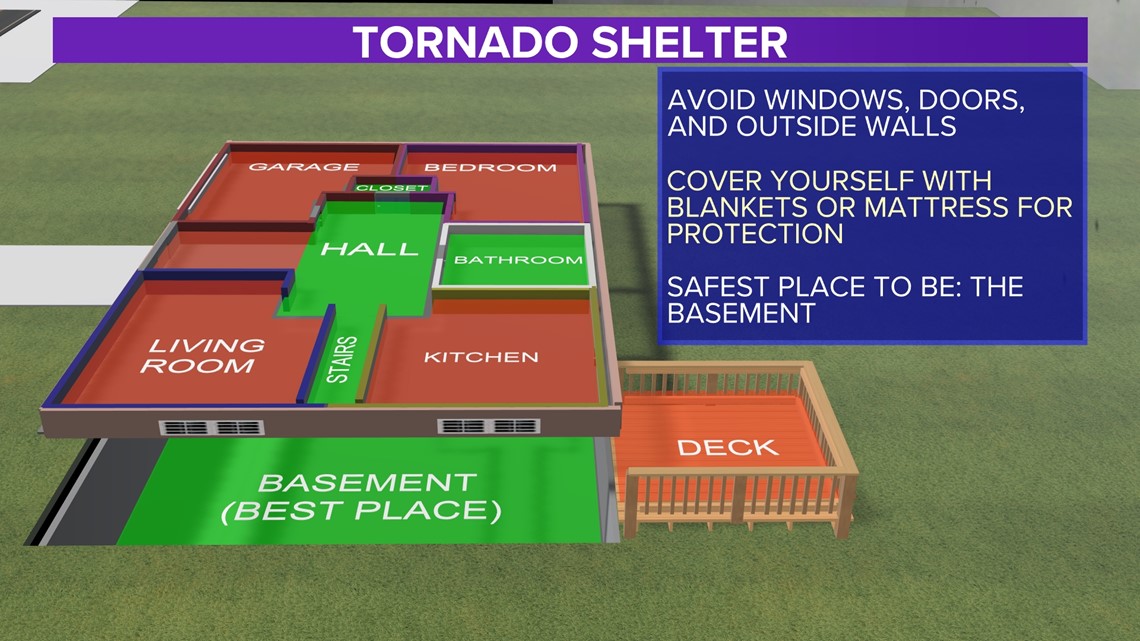
A vehicle is also dangerous to be in during a tornado. Don't stop under an overpass or bridge because it creates a wind tunnel. If possible, pull off at the nearest exit and seek shelter in a building.
As the last resort, lay in a low-lying area/ditch or lower yourself in your car away from the windows.
Watch vs Warning
It's also important to understand the difference between a watch and a warning.

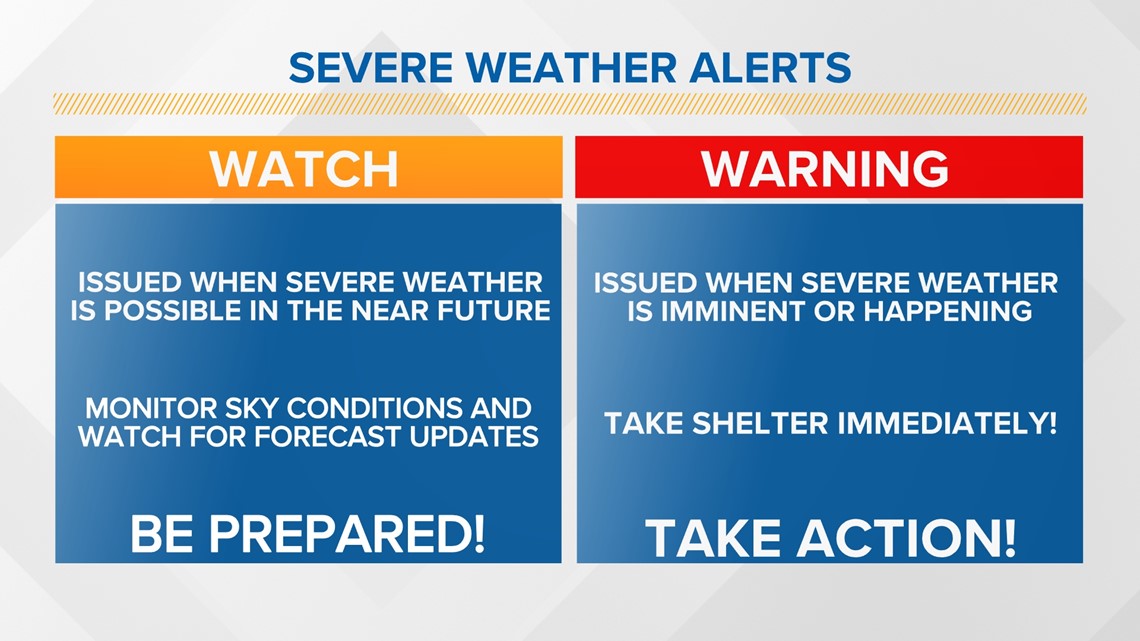
A severe thunderstorm (tornado) watch means conditions are favorable for severe weather. During a watch, be prepared to move to your safe location.
A warning for a severe thunderstorm (tornado) means the threat of severe weather is imminent or happening, and you should seek shelter immediately.
The criteria for a severe thunderstorm is hail at least one inch in diameter (quarter-sized) and/or wind speeds of at least 58 mph.
According to the National Weather Service, the largest hailstone on record in the U.S. is 8 inches in diameter that fell in Vivian, South Dakota on July 23, 2010.
EF Scale and what it means
Tornadoes are classified by the wind speeds and the destruction they caused. The tornado that hit Mayfield, KY was rated a high-end EF-4, with wind speeds of 190 mph.

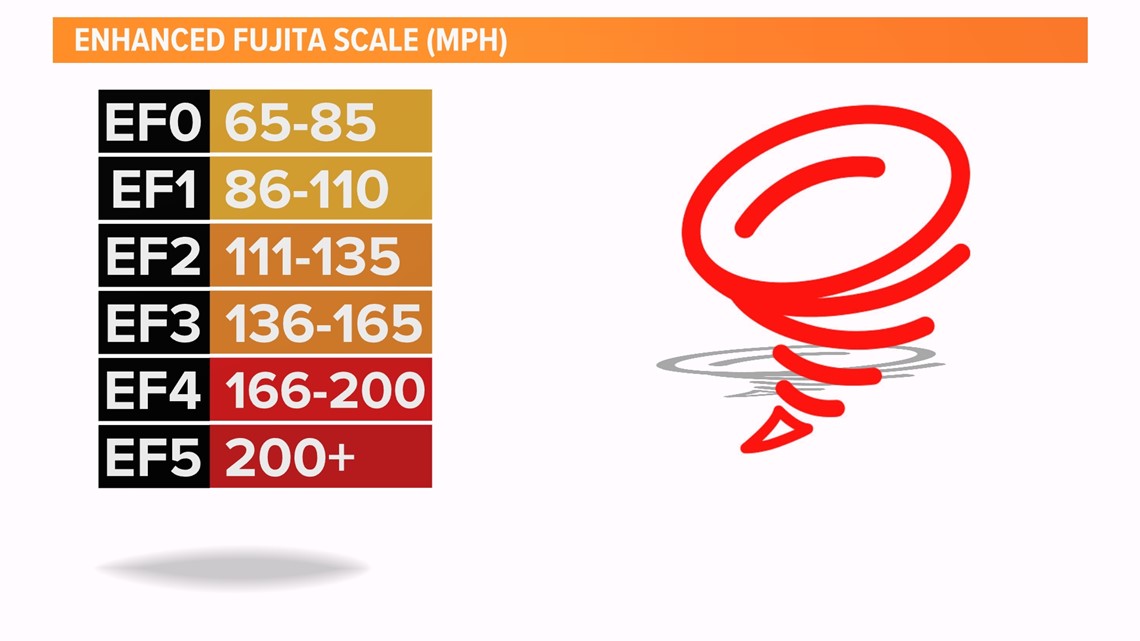
Have a severe weather emergency kit ready to go located where you will seek shelter. The kit should at least include flashlights, batteries, non-perishable food, water, a first aid kit, medications, extra clothes, a whistle, helmets, and sanitary items.

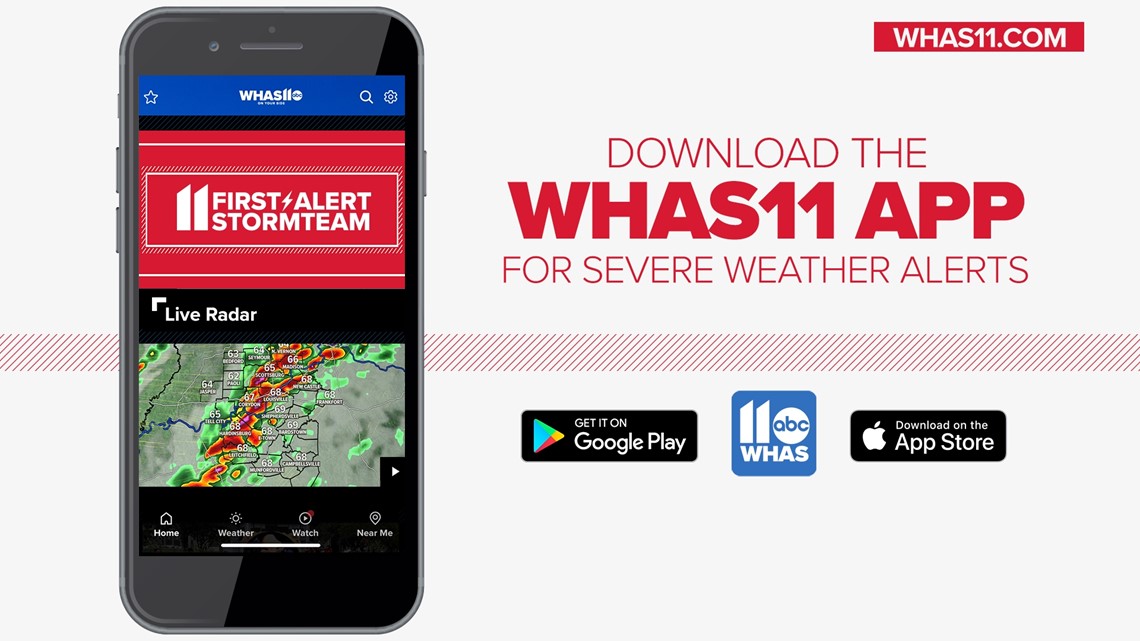
An NOAA weather radio will give you alerts, even when the power goes out. Make sure you keep the radio has fresh batteries and programmed properly for the county you live in.
Make it easy to keep up-to-date with the weather report. Download the WHAS11 News app now:

